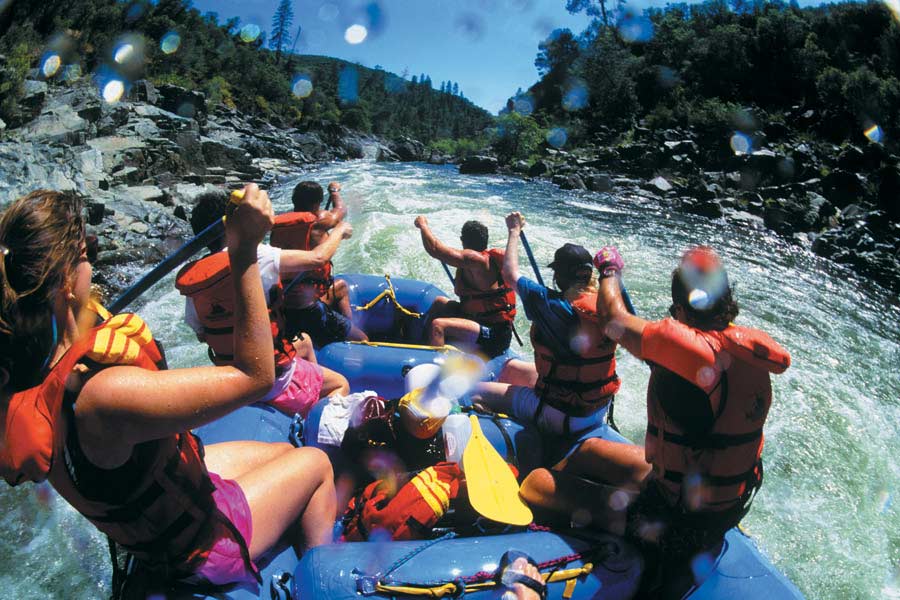5 Safety Pieces You Need Before River Rafting
Whitewater rafting is an invigorating and challenging sport. Yet it’s important to ensure that everyone feels as safe as they do while out on the water. Though you probably won’t ever need to use your whitewater safety equipment, you’ll need to stock your boat with all the essentials before heading out on the water.
1. Clothing
The right clothing can make or break your safety rating while navigating the white water jungle. You need to spend your time paying attention to your surroundings and not on your gear. Try to opt for water repellent and waterproof gear whenever you can. A wet suit is the best way to stay dry in the boat and out of the boat should you happen to go overboard. River shoes, neoprene materials and river jackets can keep you dry when the water gets too high. Try to steer clear of heavy clothing; absorbent materials, like cotton; items with metal detailing or jeans.
2. Headwear
A helmet can be one the most important pieces of safety equipment you can buy. Though you’ll probably never hit your head on a hard surface while white river rafting, you could suffer from a concussion or worse if you end up going overboard. Though it’s highly unlikely that the boat will flip, you’ll need to spend your time righting the vessel and not worrying about your skull’s safety. Opt for a helmet that is specially designed for white water rafting and not a bike or motorcycle helmet.
3. Personal Flotation Device
“Whether you’re headed out with a private group or a professional company, a personal flotation device is a must on any white water trip,” said New & Gauley River Adventures. The most common type of flotation device is a flotation vest. Don’t try to use the same flotation vest that you’d use in a canoe, though. You’ll need a special vest just for the raging white water rapids. Your life vest should fit snugly but not cut off any circulation. If you’re concerned about mobility in the raft, try to find a low-float safety vest. Low-float vests can ensure you still have full range of motion while staying safe.
4. Safety Whistle
Even if you’re planning on paddling with a large group, you should still consider bringing a safety whistle. Should you get separated from the group, you’ll need a way to contact the others for help. A loud whistle is the best way to let your group or a rescue team find your location in an emergency. If you’re trapped somewhere and need assistance, you might not have the energy to yell for help. It only takes a small amount of air to make a loud noise with a safety whistle. Try to find a whistle that you can reach easily; if you can’t find you whistle, you won’t be able to call for help. Most whistles can be attached to a jacket collar or strung around your neck for easy access.
5. Safety Rope
Sometimes you need to worry about the safety of others as well as your own; a safety rope can save someone’s life in a pinch. Safety ropes are also known as whitewater safety throw bags. If a rafter goes overboard, you can simply throw him or her the throw bag. When the bag hits the water, it should fill up with liquid. The water will weigh down the bag and help you aim the bag toward the person in need of help. Most of these ropes wrap around your waist, so you always have the rope handy. You’ll also be able to use your own weight as leverage to ensure the person in need doesn’t float further down the river.
Safety equipment doesn’t just include the gear you tote in your boat. Sometimes the best safety equipment you’ll need on the water includes the arsenal of safety knowledge you absorb in a water safety class. Make sure you understand how your safety equipment works before your journey. If you’re a novice paddler, don’t head out to the river alone; make sure you bring a teacher, guide or experienced paddler to ensure your trip doesn’t take a wrong turn.


















